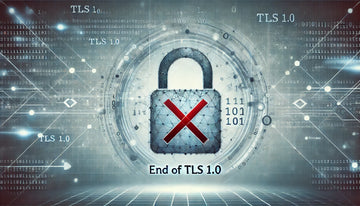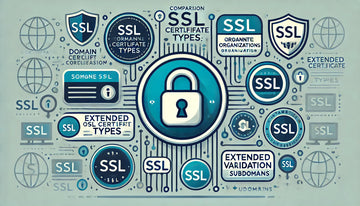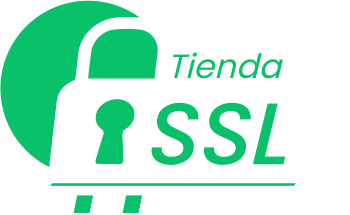In the ever-evolving world of online security, SSL (Secure Sockets Layer) has played a pivotal role in safeguarding data transmission over the web. Over time, SSL has transformed from a niche security protocol to a widespread standard that secures millions of websites worldwide. Understanding the evolution of SSL, from the early days of HTTP to the modern era of HTTPS and beyond, provides valuable insight into how online security has adapted to meet the increasing threats posed by cybercriminals.
In this post, we’ll take a look at the journey of SSL, how it has evolved, and why its importance continues to grow in the digital landscape.
What is SSL?
SSL is a security protocol that establishes encrypted communication between a web browser and a server. It ensures that any data transmitted between the two remains confidential and secure from potential eavesdroppers. SSL technology became widely recognized as websites began transmitting sensitive information, such as payment details and login credentials.
When a website uses SSL, the URL changes from "HTTP" to "HTTPS," with the "S" standing for "secure." The presence of SSL is also indicated by a padlock symbol in the address bar, reassuring users that their connection is encrypted.
The Early Days: HTTP and Security Vulnerabilities
When the web was still in its infancy, most websites used the Hypertext Transfer Protocol (HTTP) to facilitate communication between servers and browsers. HTTP was fast and efficient, but it lacked any form of encryption, meaning that data sent over an HTTP connection was transmitted in plain text. This made it easy for hackers to intercept sensitive information, leading to widespread security concerns.
As online shopping, banking, and the exchange of personal information became more common, the need for a secure communication protocol became urgent. This is where SSL emerged as a solution to these security issues.
The Birth of SSL
SSL was developed by Netscape in 1994 as a means to secure online transactions. SSL v2.0, released in 1995, was the first widely adopted version, but it contained security flaws that needed to be addressed. These flaws were rectified with the release of SSL v3.0 in 1996, which became the foundation for modern SSL protocols.
The purpose of SSL was to create an encrypted channel that could protect sensitive data from interception or tampering during transmission. SSL made it possible to secure online payments, logins, and personal data, which was a major breakthrough for the internet as a whole.
The Shift to TLS
By the late 1990s, SSL had become the standard for securing web communications. However, as security threats continued to evolve, it became clear that SSL v3.0 would need improvements. In response, the Internet Engineering Task Force (IETF) developed a new protocol called Transport Layer Security (TLS), which was introduced in 1999.
TLS was designed as an upgraded version of SSL, addressing many of the vulnerabilities found in SSL v3.0. Despite the shift to TLS, many people continued to refer to the protocol as "SSL," and the term is still commonly used today. In reality, most websites now use TLS, but the familiar "SSL" label has remained part of the internet lexicon.
From SSL to HTTPS
One of the most visible changes SSL brought to the web was the transition from HTTP to HTTPS. HTTPS (Hypertext Transfer Protocol Secure) is simply HTTP combined with SSL/TLS encryption. This ensures that data sent between a browser and a server is encrypted and secure.
The move from HTTP to HTTPS was gradual, but it gained significant momentum when search engines, particularly Google, began prioritizing HTTPS websites in their search rankings. Google’s decision to favor HTTPS sites was rooted in a broader push for a more secure internet, encouraging website owners to adopt SSL/TLS for the benefit of their users.
HTTPS and SEO: A Ranking Signal
In 2014, Google announced that HTTPS would be used as a ranking signal in its search algorithm. This meant that websites with SSL certificates would have a better chance of ranking higher in search results than those without. This decision prompted a surge in SSL adoption, as website owners recognized the SEO benefits of securing their sites.
Today, HTTPS is not just a preference for website owners; it has become a standard for any website that handles sensitive information, from personal details to payment transactions.
Let's Encrypt and the Rise of Free SSL Certificates
One of the barriers to widespread SSL adoption in the early years was the cost associated with obtaining an SSL certificate. SSL certificates were typically issued by certification authorities (CAs) at a price, which made them prohibitive for smaller websites and personal blogs.
This changed with the launch of Let’s Encrypt in 2016, a free, automated, and open certificate authority. Let’s Encrypt made it possible for anyone to secure their website with SSL/TLS at no cost, democratizing online security and making HTTPS more accessible.
The rise of free SSL certificates has led to an explosion in the number of websites using HTTPS, further cementing SSL’s role as a foundational technology for the modern web.
The End of SSL v3.0
In 2014, SSL v3.0 was officially deprecated due to vulnerabilities that made it susceptible to attacks like POODLE (Padding Oracle On Downgraded Legacy Encryption). Websites that continued to use SSL v3.0 were urged to upgrade to the more secure TLS protocols (TLS 1.2 or TLS 1.3).
TLS 1.2, introduced in 2008, and TLS 1.3, introduced in 2018, are now the standard encryption protocols used for securing online communication. These versions offer improved security, faster connection speeds, and stronger encryption algorithms compared to their predecessors.
What’s Next for SSL/TLS?
As cyber threats continue to evolve, so too will the technologies designed to combat them. While TLS 1.3 is currently the most secure version of the protocol, we can expect future developments that will further enhance online security.
The move toward a fully encrypted web is already underway, with more and more websites adopting HTTPS by default. This trend will likely continue as the internet becomes an even more integral part of everyday life.
Beyond SSL: The Future of Web Security
While SSL/TLS has become synonymous with online security, other technologies are emerging to complement these protocols. Innovations like DNSSEC (Domain Name System Security Extensions), certificate transparency, and quantum-resistant encryption are being developed to further strengthen the security of online communications.
Quantum computing, in particular, poses a potential threat to traditional encryption methods, as quantum computers have the theoretical ability to break many of the encryption algorithms currently in use. As a result, researchers are working on quantum-resistant encryption methods that can withstand the power of quantum computing.
Conclusion: The Enduring Importance of SSL
The evolution of SSL from its early days as a solution for securing online transactions to its current role as a key component of modern web security is a testament to the importance of encryption in the digital age. As cyber threats continue to evolve, so too will SSL/TLS and the technologies that protect our online communications.
Today, HTTPS is not just a best practice; it’s a necessity for any website that values security, user trust, and search engine visibility. As we look to the future, the continued evolution of SSL and related technologies will ensure that the internet remains a safe and secure place for all users.














